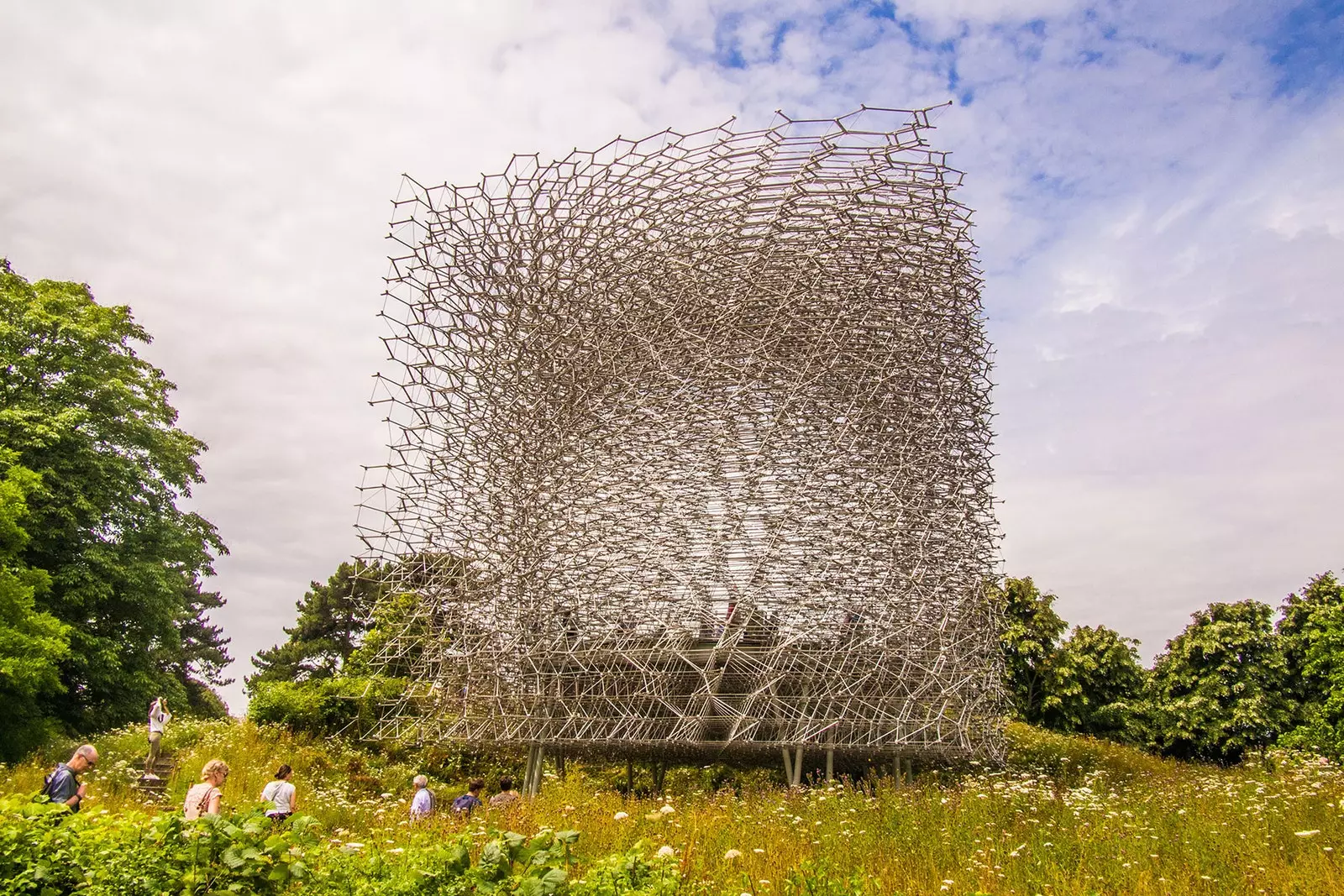
The Beehive at Kew Gardens
Londoners ** revere green spaces ,** being Kew Gardens one of his favorite places of pilgrimage. This is a oasis of tranquility , just 30 minutes from the center, which is visited by locals and tourists alike, especially on weekends and when the weather is good.
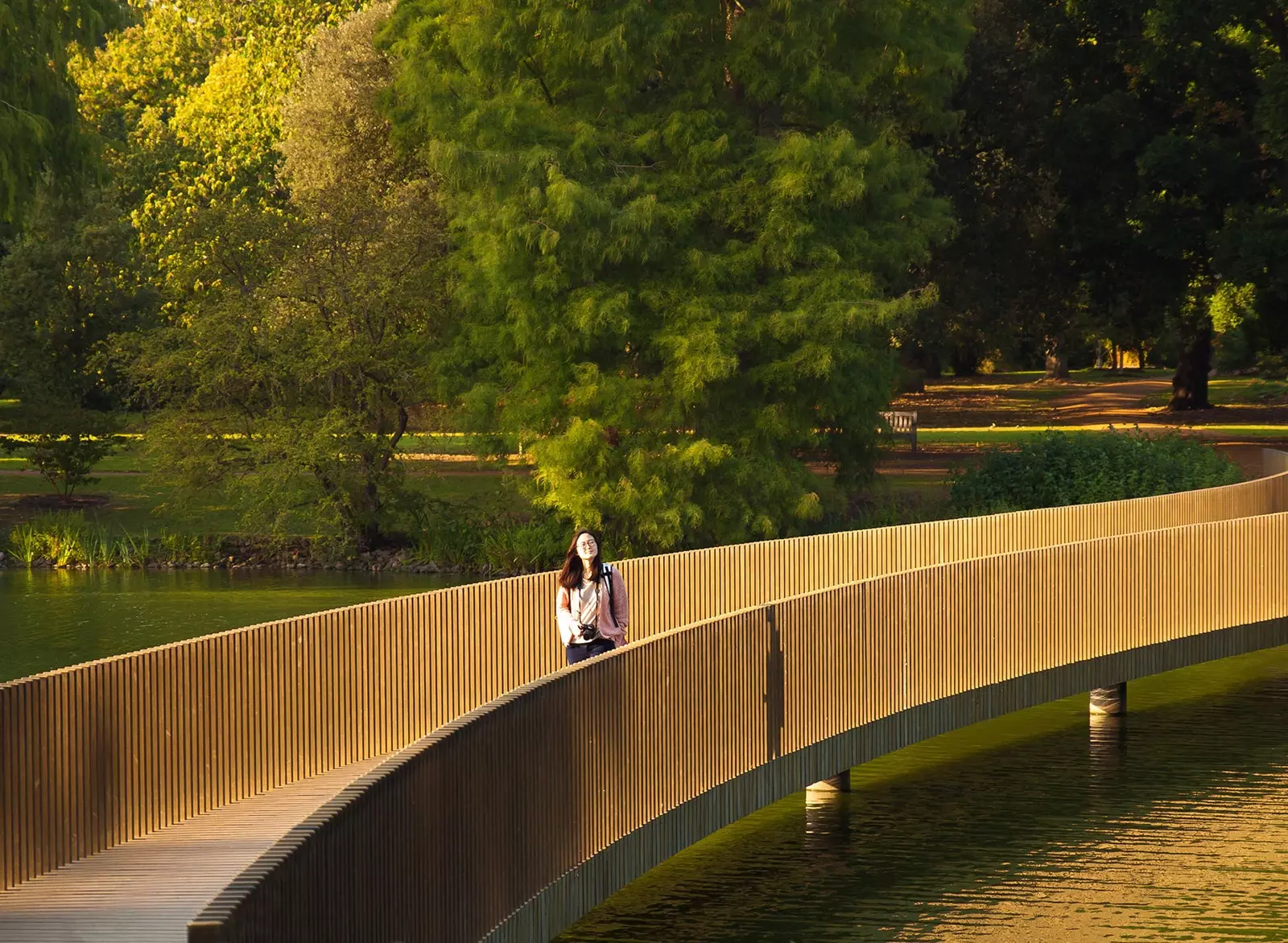
Sackler Crossing
Their figures overwhelm: 134 hectares of nature, equivalent to 150 soccer fields, with 14,000 trees cared for 80 gardeners . However, its beginnings were modest. In 1759 Princess Augusta created a private garden that did not reach four hectares as a private park of the royal family, and which today has become the largest place in London declared UNESCO World Heritage Site.
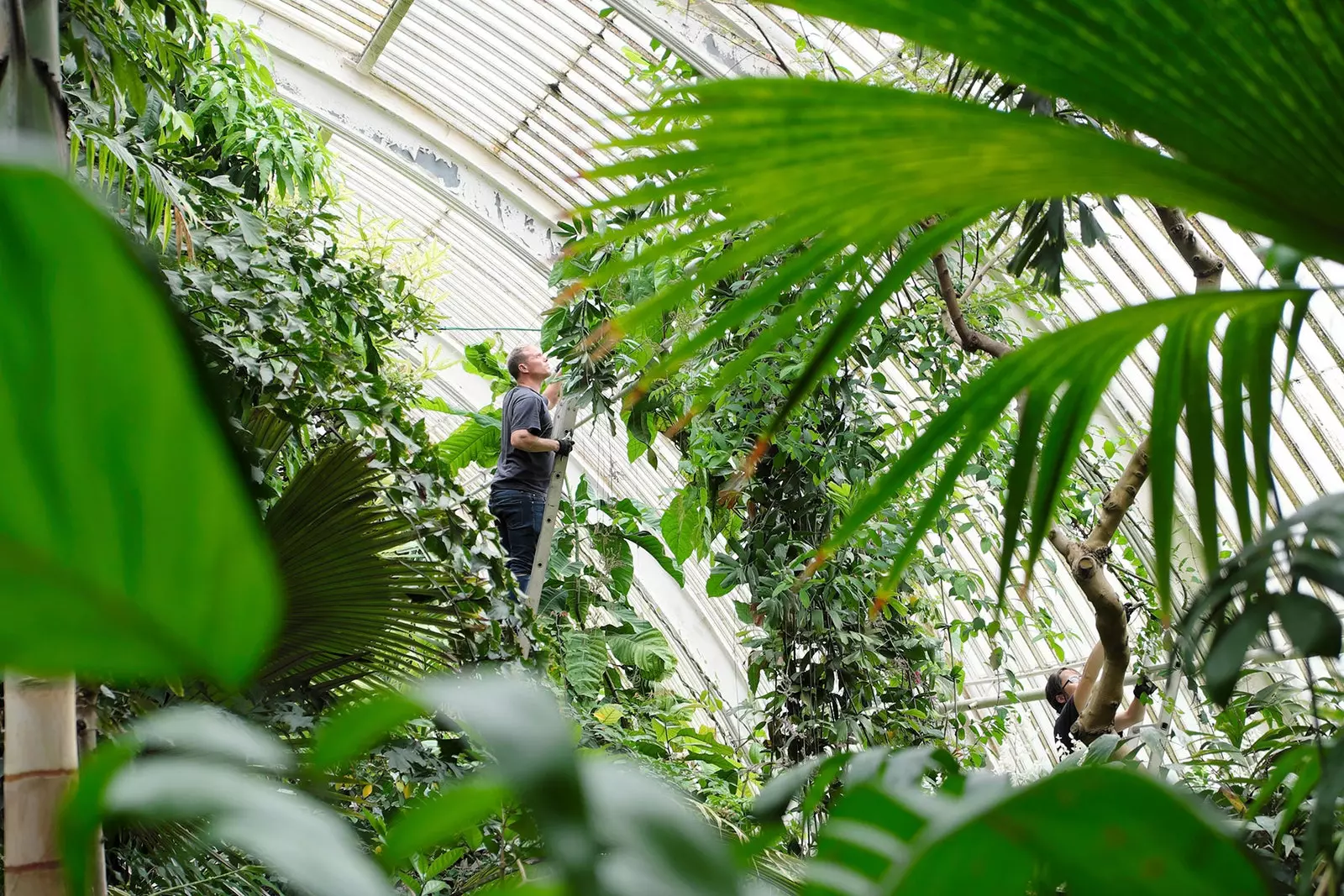
80 gardeners maintain Kew Gardens
Your first stop may be the palm house ( Palm House ) , a victorian conservatory where a forest with tropical plants awaits you, some of them are in danger of extinction.
This building was created in 1841 to host the plants that explorers brought from their expeditions to tropical areas such as rubber trees, agave, henna, coffee, cocoa, sugar cane or the Madagascar palm , among other.
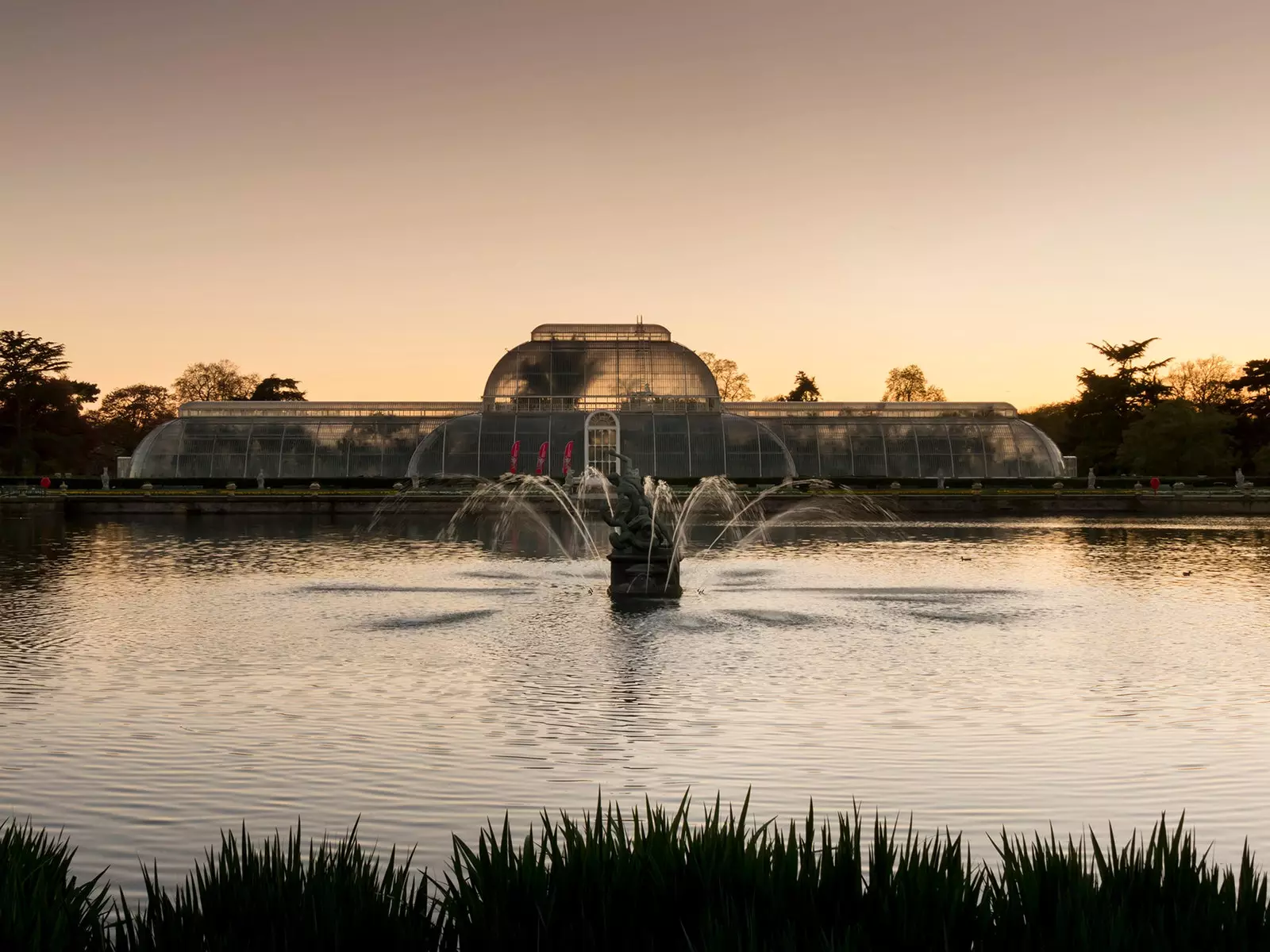
Palm House at Kew Gardens
If you want to see Kew Gardens from above, take the 200-metre walkway, built by the same person who brought the London Eye to the city. It is located in the center of the park and you will be able to see the tops of the trees 18 meters above the ground.
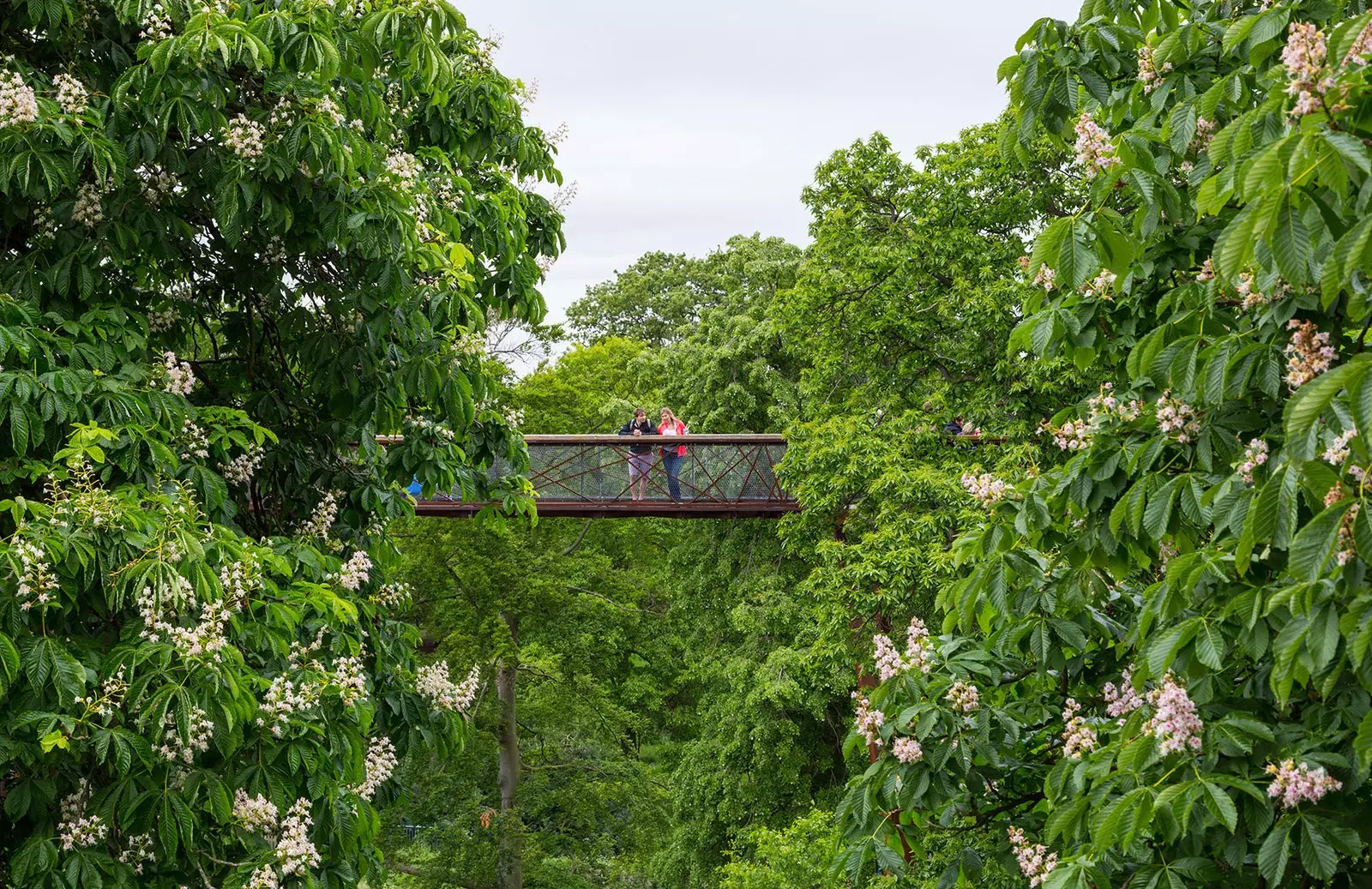
Walkway between treetops of 18 meters
Not far from this structure is the ' big pagoda ’ from where you can also see the gardens from the top (although it is currently being renovated and will not reopen to the public until 2018). It is a tower of 10 floors that imitates the architecture of Buddhist buildings. It was one of the first structures to offer bird's eye view of london and one of the most exact recreations of a Chinese building in Europe when it was built in 1762.
In its surroundings you will find three spaces reminiscent of the japanese gardens with stones, bushes and waterfalls, distributed in three spaces that seek the peace and harmony.
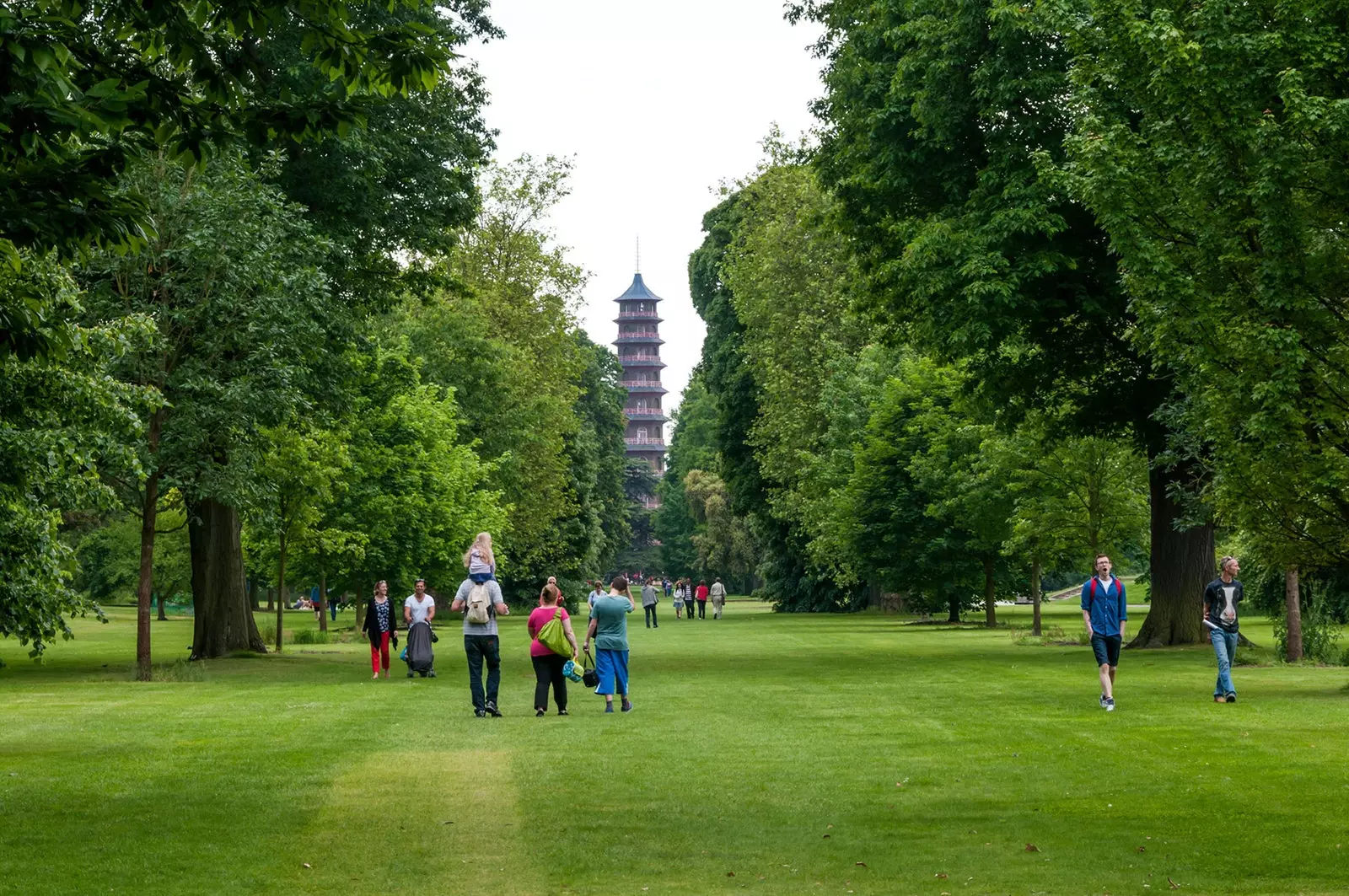
Here the London pagoda
From Asia we travel to the typical English cottage of the queen charlotte , a small country house where members of the royal family used to have tea when they came to spend a few days at Kew Gardens.
If you want to learn more about the secrets of this green lung, you can sign up for one of the Guided tours organized free of charge. You will learn some curiosities such as that trees make up 10% of the land in the United Kingdom, living for more than 10,000 years and that Kew Gardens is home to the 'giant hoop', the world's largest flower that can weigh more than 90 kilos.
You cannot leave the park without seeing one of the areas that visitors like the most: 'Beehive'. It is a structure of 17 meters , symbol of creativity and innovation. Strands of wire and 1,000 LED lights recreate the bees' home . This is connected to real hives in the park and its lights come on when the bees move. A sensory experience to learn more about these insects while enjoying a landscape like no other.
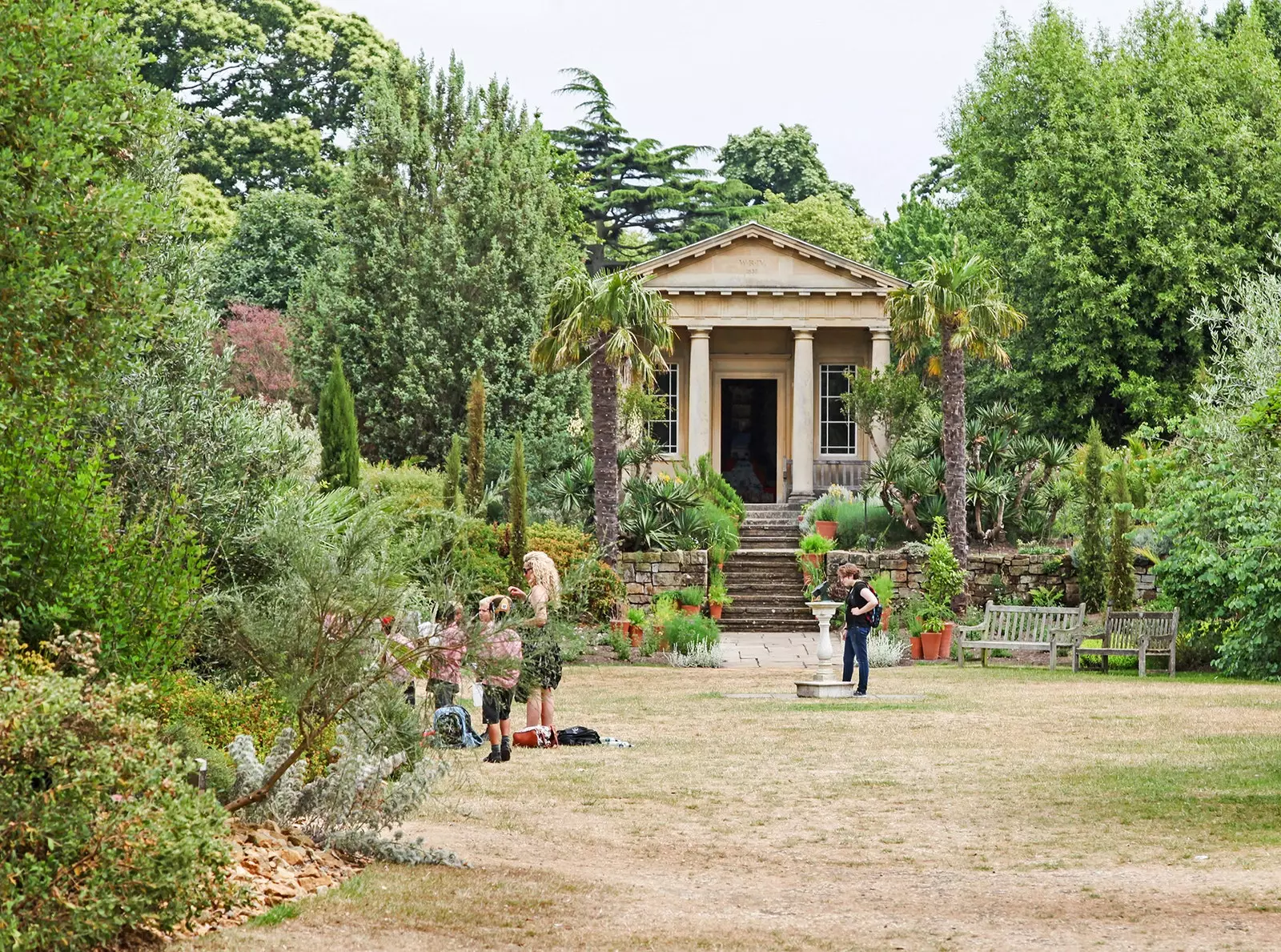
Kew Gardens, disconnection half an hour from central London
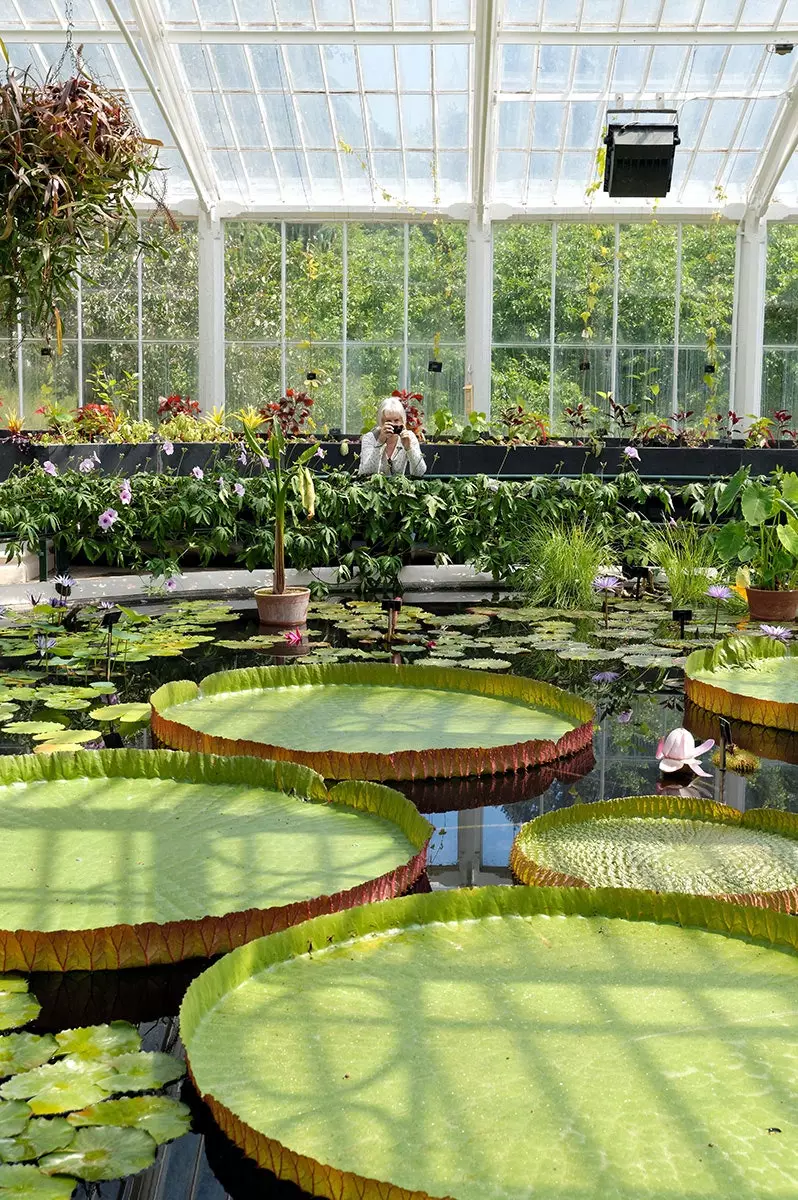
The water lily pond
